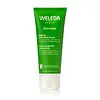What's inside
What's inside
 Key Ingredients
Key Ingredients

 Benefits
Benefits

 Concerns
Concerns

 Ingredients Side-by-side
Ingredients Side-by-side

Water
Skin ConditioningHelianthus Annuus Seed Oil
EmollientLanolin
EmollientPrunin
AntioxidantPrunus Amygdalus Dulcis Protein
Skin ConditioningPrunus Amygdalus Dulcis Oil
Skin ConditioningCera Alba
EmollientAlcohol
AntimicrobialSoy Acid
EmollientCalcium Ascorbate
AntioxidantGlycerin
HumectantLimonene
PerfumingViolacein
AntimicrobialViola Tricolor Extract
EmollientEel Extract
HumectantHydrolyzed Beeswax
EmulsifyingSorbitan Olivate
EmulsifyingRosmarinic Acid
AntioxidantSalvia Officinalis Oil
MaskingChamomilla Recutita Flower Extract
MaskingCalendula Officinalis Flower Extract
MaskingArginine
MaskingZinc
AntioxidantZinc Sulfate
AntimicrobialParfum
MaskingLinalool
PerfumingGeraniol
PerfumingCitral
PerfumingCoumarin
PerfumingWater, Helianthus Annuus Seed Oil, Lanolin, Prunin, Prunus Amygdalus Dulcis Protein, Prunus Amygdalus Dulcis Oil, Cera Alba, Alcohol, Soy Acid, Calcium Ascorbate, Glycerin, Limonene, Violacein, Viola Tricolor Extract, Eel Extract, Hydrolyzed Beeswax, Sorbitan Olivate, Rosmarinic Acid, Salvia Officinalis Oil, Chamomilla Recutita Flower Extract, Calendula Officinalis Flower Extract, Arginine, Zinc, Zinc Sulfate, Parfum, Linalool, Geraniol, Citral, Coumarin
Water
Skin ConditioningIsohexadecane
EmollientDipropylene Glycol
HumectantCaprylic/Capric/Myristic/Stearic Triglyceride
EmollientLauryl PEG-9 Polydimethylsiloxyethyl Dimethicone
Skin ConditioningSimmondsia Chinensis Seed Oil
EmollientButyrospermum Parkii Butter
Skin ConditioningDimethicone
EmollientGlycerin
HumectantOctyldodecyl Neopentanoate
EmollientSodium Chloride
MaskingIsostearic Acid
CleansingArginine/Lysine Polypeptide
Skin ConditioningPalmitoyl Tripeptide-5
Skin ConditioningAvena Sativa Kernel Extract
AbrasivePyrus Malus Seed Extract
Skin ConditioningBorago Officinalis Seed Oil
EmollientOenothera Biennis Oil
EmollientHydrogenated Coconut Oil
EmollientGardenia Taitensis Flower
Skin ConditioningLaminaria Digitata Extract
Skin ProtectingYeast Extract
Skin ConditioningGlucosamine Hcl
Cedrus Atlantica Bark Oil
MaskingCupressus Sempervirens Leaf/Stem Extract
Skin ConditioningEucalyptus Globulus Leaf Oil
PerfumingHelianthus Annuus Seed Oil
EmollientPelargonium Graveolens Flower Oil
MaskingAniba Rosodora Wood Oil
AstringentAbies Sibirica Oil
MaskingSantalum Album Oil
MaskingSodium Hyaluronate
HumectantTocopheryl Acetate
AntioxidantColloidal Oatmeal
AbsorbentMadecassoside
AntioxidantUrea
BufferingHexyldecanol
EmollientPolyglyceryl-4 Isostearate
EmulsifyingCetyl Dimethicone
EmollientHydrogenated Castor Oil
EmollientButylene Glycol
HumectantCaprylyl Glycol
EmollientEthylhexylglycerin
Skin ConditioningHexylene Glycol
EmulsifyingLinalool
PerfumingGeraniol
PerfumingCitronellol
PerfumingPhenoxyethanol
PreservativeWater, Isohexadecane, Dipropylene Glycol, Caprylic/Capric/Myristic/Stearic Triglyceride, Lauryl PEG-9 Polydimethylsiloxyethyl Dimethicone, Simmondsia Chinensis Seed Oil, Butyrospermum Parkii Butter, Dimethicone, Glycerin, Octyldodecyl Neopentanoate, Sodium Chloride, Isostearic Acid, Arginine/Lysine Polypeptide, Palmitoyl Tripeptide-5, Avena Sativa Kernel Extract, Pyrus Malus Seed Extract, Borago Officinalis Seed Oil, Oenothera Biennis Oil, Hydrogenated Coconut Oil, Gardenia Taitensis Flower, Laminaria Digitata Extract, Yeast Extract, Glucosamine Hcl, Cedrus Atlantica Bark Oil, Cupressus Sempervirens Leaf/Stem Extract, Eucalyptus Globulus Leaf Oil, Helianthus Annuus Seed Oil, Pelargonium Graveolens Flower Oil, Aniba Rosodora Wood Oil, Abies Sibirica Oil, Santalum Album Oil, Sodium Hyaluronate, Tocopheryl Acetate, Colloidal Oatmeal, Madecassoside, Urea, Hexyldecanol, Polyglyceryl-4 Isostearate, Cetyl Dimethicone, Hydrogenated Castor Oil, Butylene Glycol, Caprylyl Glycol, Ethylhexylglycerin, Hexylene Glycol, Linalool, Geraniol, Citronellol, Phenoxyethanol
 Reviews
Reviews

Ingredients Explained
These ingredients are found in both products.
Ingredients higher up in an ingredient list are typically present in a larger amount.
Geraniol is used to add fragrance/parfum to a product. It is the main component of citronellol. It is a monoterpenoid and an alcohol.
Monoterpenes are naturally found in many parts of different plants.
Geraniol can be found in many essential oils including Rose Oil and Citronella Oil. The scent of Geraniol is often described as "rose-like". Many foods also contain Geraniol for fruit flavoring.
Geraniol can irritate the skin when exposed to air. However, irritation depends on the ability of geraniol to penetrate into the skin. In general, geraniol is not able to penetrate skin easily.
Geraniol is colorless and has low water-solubility. However, it is soluble in common organic solvents.
Like citronellol, it is a natural insect repellent.
2,6-Octadien-1-ol, 3,7-dimethyl-, (2E)-
Learn more about GeraniolGlycerin is already naturally found in your skin. It helps moisturize and protect your skin.
A study from 2016 found glycerin to be more effective as a humectant than AHAs and hyaluronic acid.
As a humectant, it helps the skin stay hydrated by pulling moisture to your skin. The low molecular weight of glycerin allows it to pull moisture into the deeper layers of your skin.
Hydrated skin improves your skin barrier; Your skin barrier helps protect against irritants and bacteria.
Glycerin has also been found to have antimicrobial and antiviral properties. Due to these properties, glycerin is often used in wound and burn treatments.
In cosmetics, glycerin is usually derived from plants such as soybean or palm. However, it can also be sourced from animals, such as tallow or animal fat.
This ingredient is organic, colorless, odorless, and non-toxic.
Glycerin is the name for this ingredient in American English. British English uses Glycerol/Glycerine.
Learn more about GlycerinHelianthus Annuus Seed Oil is the oil derived from the seeds of a Sunflower. Sunflower seed oil is non-fragrant. It is an emollient, meaning it helps to soften the skin.
Sunflower seed oil contains many fatty acids. The fatty acids found in sunflower seeds include (from highest amount to least): linoleic acid, myristic acid, palmitic acid, stearic acid, arachidic acid, oleic acid, and linolenic acid.
These fatty acids help the skin create ceramides. Ceramides play a role in repairing the skin barrier.
Helianthus Annuus Seed Oil helps moisturize the skin. This in turn helps the skin look more rejuvenated and smoother.
Sunflowers are rich in vitamin E.
Historians believe Indigenous cultures of North America domesticated sunflowers before corn. Thus they relied on sunflower oil for a variety of uses. One such use is moisturizing skin and hair.
Sunflower seed oil may not be fungal acne safe. We recommend speaking with a professional if you have any concerns.
Learn more about Helianthus Annuus Seed OilLinalool is a fragrance and helps add scent to products. It's derived from common plants such as cinnamon, mint, citrus, and lavender.
Like Limonene, this ingredient oxidizes when exposed to air. Oxidized linalool can cause allergies and skin sensitivity.
This ingredient has a scent that is floral, spicy tropical, and citrus-like.
Learn more about LinaloolWater. It's the most common cosmetic ingredient of all. You'll usually see it at the top of ingredient lists, meaning that it makes up the largest part of the product.
So why is it so popular? Water most often acts as a solvent - this means that it helps dissolve other ingredients into the formulation.
You'll also recognize water as that liquid we all need to stay alive. If you see this, drink a glass of water. Stay hydrated!
Learn more about Water